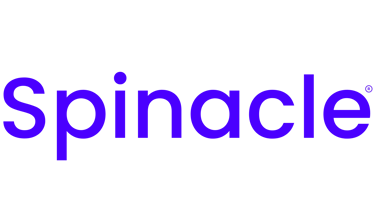Chapter 5: Entering B2C Insurtech – From Insurance Experiments to Cancer Care
The Reality Check: Why Insurance? By early 2025, we had already explored AI in healthcare, HIMS, and Insurtech, but something still felt missing.
AIINSURTECHHEALTHCAREFINTECH
Santhosh Kumar E
2/8/20254 min read
(Or, The Time We Realized That Insurance Is More Than Just Policies and Premiums)
The Reality Check: Why Insurance?
By early 2025, we had already explored AI in healthcare, HIMS, and Insurtech, but something still felt missing.
💡 We wanted to build something impactful.
💡 We wanted AI and data to be the backbone of whatever we did.
💡 We needed a model that was scalable and financially sustainable.
That’s when we decided to go all-in on B2C Insurtech.
At first, this seemed like the perfect space. Health insurance is a huge industry, but full of inefficiencies.
We started studying the market, looking at:
📌 Why are health insurance policies so complicated?
📌 Why do people avoid buying insurance unless it's mandatory?
📌 How do major players like PolicyBazaar, Plum, and Ditto operate?
📌 Where can we differentiate ourselves?
But before diving into this world, we had to be clear on WHY we were doing it.
The answer? AI and data.
AI & Data: The Core of Everything We Do
Many people ask:
“You were working on AI in healthcare—why jump into Insurtech?”
The truth is, no matter what front-end business we build—health tech, insurance tech, fintech—the foundation will always be AI and data.
Why?
👉 AI is only as good as the data behind it.
👉 If we control the data, we control the AI-driven innovation in that sector.
👉 Without data, there is no AI—just theoretical models that can’t be trained or applied.
We already tried AI in healthcare (Spinacare) but struggled to get medical data due to regulations.
Insurance, however, is a different story.
📌 People willingly share data for better insurance coverage.
📌 Health insurance is tied to medical records, so structured data exists.
📌 This data can be used to create AI-driven risk models.
So, while we were entering Insurtech, our core vision remained the same—using AI to make things better.
Understanding the Competition
Before jumping in, we analyzed the biggest players in Insurtech:
🏢 PolicyBazaar – India’s largest insurance aggregator.
🏢 Plum – A B2B Insurtech startup focusing on employee health benefits.
🏢 Ditto Insurance – A rising player focused on personalized insurance advisory.
These companies were already doing great work.
So, the question was: Where do we fit in?
We didn’t want to just compete—we wanted to solve an unsolved problem.
The First Idea – A Reward-Based Insurance App
We started with a simple yet powerful concept:
💡 What if we could make insurance cheaper for people who share health data?
🚀 Users upload their health records.
🚀 We analyze their risk profile using AI.
🚀 They get discounts on insurance premiums.
🚀 They can redeem rewards at gyms, pharmacies, and wellness centres.
For example:
📌 If your insurance premium is ₹1,000 per month, but you provide verified health data, we could reduce it to ₹800, giving you a ₹200 discount.
The logic was simple:
👉 More data = better AI predictions = lower insurance risks = lower premiums.
We thought: This is it! This is how we make insurance better!
But then came the IRDAI regulations.
The Regulatory Nightmare – Capital Requirements in Insurance
To become an insurance provider or aggregator in India, we needed to comply with IRDAI (Insurance Regulatory and Development Authority of India) rules.
When we researched, we got a reality check:
💰 ₹75 lakh – Required capital to be a Direct Broker.
💰 ₹50 lakh – Required capital to be a Corporate Agent.
💰 Even more – Required for a Public Aggregator license.
🚨 This was a huge barrier for a startup like us.
Unlike a tech startup that can be bootstrapped, the insurance industry needed heavy capital investment upfront.
That’s when we asked ourselves:
❓ “Can we find another way to enter this market without raising millions of rupees first?”
The Wallet Idea – Another Capital Barrier
To solve the affordability problem, we thought of launching a digital wallet for health savings.
🔹 Users could deposit money into a health savings wallet.
🔹 This money would be used to pay their insurance premiums.
🔹 It would function like a “healthcare piggy bank.”
But here’s the problem:
🚨 Setting up a digital wallet required ₹2 crore in capital.
🚨 Becoming an NBFC (Non-Banking Financial Company) was an even bigger challenge.
At this point, we were constantly running into regulatory roadblocks.
So, we started thinking:
📌 What if we didn’t build our own wallet?
📌 What if we partnered with a bank instead?
That’s when we discovered neobanking.
The Pivot to Neobanking – A Smarter Solution
Instead of creating our own wallet, we thought:
💡 Why not partner with banks to create digital savings accounts for healthcare?
🚀 Users could save money in a neobank savings account.
🚀 They could use this money to pay for insurance premiums.
🚀 We could market it as a ‘Health Savings Plan.’
It was a great idea—except for one big problem.
📌 Most people don’t like saving money.
We discussed this with our mentor, Prakash Balasubramanian, who immediately questioned us:
📞 “Who is actually going to save money for health? People live on credit—they don’t plan ahead.”
And he was right.
📌 Most people don’t save for medical emergencies—they borrow money when the need arises.
📌 Insurance is a push market—you have to actively sell it, people don’t buy it on their own.
This was another eye-opening moment.
💡 We needed a niche. We needed something urgent.
That’s when everything changed.
The Friday Night Epiphany – Why Cancer Care?
On a Friday evening, Nishaalu was riding his bike, thinking about the challenges we were facing.
We were about to have an online meeting with an industry expert—with 15 years of experience.
While thinking about our struggles, it hit him:
📌 When do people actively seek insurance? → When they already have a medical condition.
📌 When do people visit hospitals most frequently? → When they’re undergoing long-term treatment.
📌 Who needs financing and insurance the most? → Cancer patients.
💡 Cancer patients need insurance. They need financial support.
This was our eye-opener moment.
Instead of focusing on general insurance, we should focus on cancer insurance and financing.
The Final Decision – Building for Cancer Patients
🚀 We pivoted fully into cancer care financing and insurance.
🚀 We started working on a specialized cancer insurance platform.
🚀 We connected with cancer counselors and patient support groups.
One of the key people we met was Neerjaa, a cancer counsellor and a breast cancer conqueror.
“Cancer patients don’t just need insurance—they need financial security, emotional support, and better treatment options.”
At that moment, everything made sense.
What’s Next: Chapter 6 – The Future of Cancer Care Financing
(Where we talk about how we’re building a product for cancer patients and how we’re bringing it to market.)



